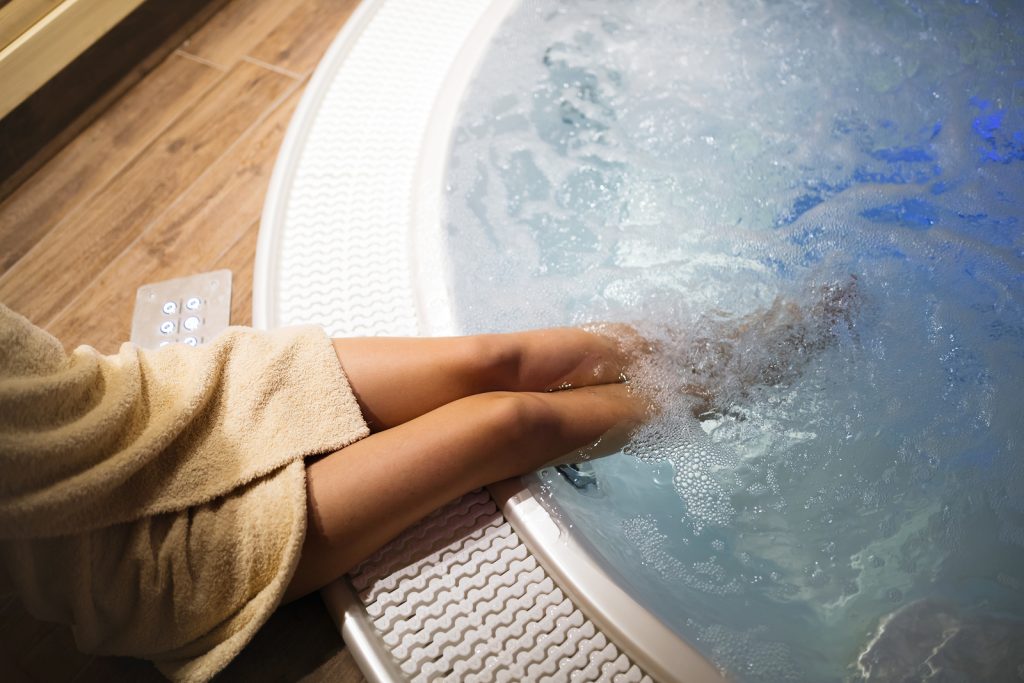Spa Safety Guidelines For Pool Operators | CPO® Basics
Just as pools have safety guidelines, hot water facilities like spas require a high standard of safety, sanitation, and maintenance. From everyday maintenance activities to proper signage, Certified Pool Operators® must have a strong understanding of spa safety guidelines. Learning the Consumer Product Safety Commission’s spa safety guidelines is a great jumping off point for learning about spa operations.
Safety Cover
Just like pools, unattended spas must have a locked safety cover to prevent unsupervised or accidental entry. Locked safety covers help reduce this liability.
Drains
Proper use of a spa requires that the suction covers are always in working order and properly and securely place. You must ensure that the spa has dual drains as well as anti-entrapment drain covers. Most importantly, the drainage system must strictly comply with the Pool and Spa Safety Act.
Check-Ups
Another important safety guideline for spas is carrying out regular check ups. A Certified Pool Operator® should regularly check that the spa is in good, safe, working condition and that drain covers are in place. The CPO® must replace any cracked or missing covers. This should be carried out daily.
Cut Off Switch
Anyone and everyone who is working at, near or using a spa must be aware of the emergency cut-off switch to the pump. There are several hazards that require an immediate shutdown of a spa’s pump. Certified Pool Operators® must know exactly where this is. Most codes require the emergency shut off switch be within site from the spa.
Water Temperature
We all love the relaxing sensation of unwinding in the hot water of a spa. However, high temperatures in a spa can pose several health risks. These include burns and skin injuries, a drop in blood pressure, dizziness, and poor balance as well as nausea and vomiting. These health risks increase when those in the spa are very young or very old. The water in a spa should never exceed 104 degrees fahrenheit.
Bacterial Growth
Maintaining a proper chemical balance is absolutely mandatory in a spa. Bacteria grows much faster in hot water and smaller bodies of water like spas, so every precaution must be taken. Always maintain a disinfectant residual with the pool chemistry. Also, monitor and control the pH balance more closely than you would a swimming pool. Higher temperatures in this smaller body of water that often has higher bather loads can be a breeding ground for bacteria.
Signage
Just as important as having spa safety guidelines is posting them in a place visible to all who are using the spa. Signs are put in place to help reduce the risk of injury. Spa signs should reflect all state and/or local codes and regulation. The Center For Disease Control (CDC) has recommendations on what should be posted on a spa sign. Keep in mind that the following may not cover all state/local regulations.
All signs of spa safety guidelines should have a caution for pregnant women and the elderly as well as those with heart disease, diabetes and high/low blood pressure. They should not enter a spa without permission from their doctor. There must be a ban on the use of alcohol in the pool and clear language reflecting that rule. Signs should also state that the spa should not be used if the temperature is over 104 degrees fahrenheit.
Signage should include that unsupervised children are strictly prohibited from entry to the spa. It must also be posted that no one should ever use the spa alone. All users should enter and exit the spa slowly and only remain in the water for reasonable, 10-15 minute time periods. The sign should also state that long exposure to the water may cause nausea, dizziness or fainting. Finally, post a rule that requires all breakable objects to be kept out of the spa.
Spa Safety Guidelines for CPO® Certification
The spa safety guidelines laid out by the Consumer Product Safety Commission should only serve as a jumping off point for spa safety education. If you are looking for a career in pool and spa operation, you need a CPO® certification from the very best provider. Pool Operation Management offers award-winning CPO® classes that teach you everything you need to know to operate a pool or spa. Contact us to get started today!








